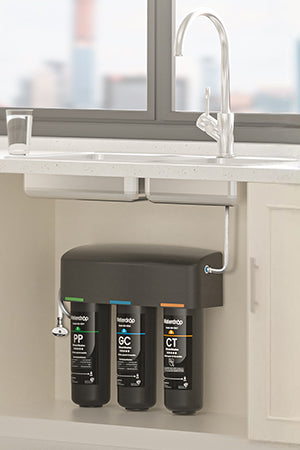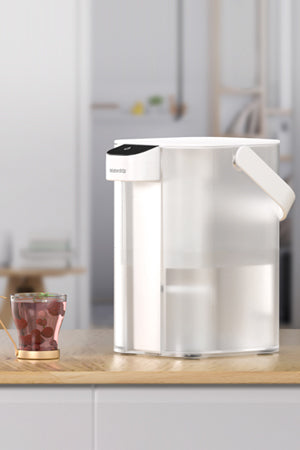We’re lucky in Singapore to have one of the best drinking water systems in the world. Our tap water meets
World Health Organization (WHO) standards and is safe to drink straight from the tap. Yet many Singaporean households choose to install water purifiers for extra peace of mind, better taste or to address concerns about old pipes.
But water purifiers have both advantages and disadvantages. Before you invest in one, you should know the downsides. This blog explores the most common disadvantages of water purifiers to help you make an informed decision.
Why Do Singaporeans Use Water Purifiers?
The Safety and Taste Factor
While Singapore tap water is safe, some people notice the taste or smell of chlorine. This alone makes many households want to filter their water.
Protecting Vulnerable Family Members
Families with babies, elderly members or those with weakened immune systems want an extra layer of protection against possible impurities or pipe residue.
Peace of Mind
A water purifier gives you peace of mind – knowing the water you drink is cleaner and free of certain contaminants.
Common Disadvantages of Water Purifiers
1. Initial Cost and Ongoing Expenses
Buying a good water purifier can be expensive upfront.
RO systems are pricier than simple carbon filters. Beyond the initial cost, maintenance adds up:
- Filter replacements every 3 to 12 months
- Occasional servicing fees
- Possible installation charges
- Long-term costs can exceed the purchase price so budgeting is key.
2. Water Wastage in RO Systems
RO systems can waste 2 to 3 litres of water for every litre filtered which is a big environmental concern – especially in Singapore where we are a water scarce nation.
But newer models have improved efficiency and can reduce water waste to 1:1 or better.
3. Loss of Beneficial Minerals
Many water purifiers, especially RO systems, remove not only contaminants but also beneficial minerals like calcium and magnesium.
While most people get minerals from food, drinking demineralised water long term may not be ideal. Some systems now have remineralisation filters to add these minerals back.
4. Slower Water Flow and Low Pressure
Multi-stage filtration can reduce flow rate. For busy households, waiting for filtered water during cooking or big gatherings can be inconvenient. Low water pressure can exacerbate this problem especially in older buildings.
5. Space and Installation Constraints
Water purifiers—especially under-sink or RO systems—take up cabinet or counter space. In Singapore’s small kitchens, this can be a challenge.
Countertop units can clutter surfaces while under-sink models require plumbing work.
6. Maintenance Requirements
Neglecting filter changes can lead to:
- Reduced filtration efficiency
- Bacterial growth inside filters
- Health risks
Stay on top of maintenance and some systems have smart reminders or apps to help you track filter life.
7. Not All Purifiers Filter the Same Contaminants
Different filters filter different things:
- Activated carbon filters remove chlorine and bad tastes but not microbes.
- UV filters kill bacteria but don’t remove chemicals or sediments.
-
RO systems remove most contaminants but at a higher cost and maintenance.
8. Environmental Impact of Filters
Filters generate waste that’s often non-recyclable. Electronic units use energy adding to your home’s carbon footprint. While purifiers reduce bottled water use they are not entirely green solutions.
9. Misleading Claims in the Market
Not all purifiers deliver what they promise. Some brands exaggerate their effectiveness or promote unproven health benefits. Look for third-party certifications like
NSF or
WQA when buying.
Are Water Purifiers Still Worth It in Singapore?
With Singapore’s high water quality you may wonder if a purifier is necessary. For many the answer is yes—because of taste preferences, peace of mind or specific household needs.
Consider Your Water Quality
Check your building’s water quality report or test your water if you’re concerned about contaminants.
Match the Purifier to Your Needs
If you want to improve taste a carbon filter may suffice. For removing a wider range of contaminants consider
RO systems .
Factor in Maintenance and Space
Choose models with easy filter replacement and compact designs.
Waterdrop: A Practical Option for Singapore Homes
Waterdrop offers compact, tankless RO systems designed with space-saving and efficiency in mind. These purifiers:
- Use multi-stage filtration to remove heavy metals, chlorine, microplastics and more.
- Have low water waste ratios addressing Singapore’s sustainability concerns.
- Add smart filter replacement reminders for easy maintenance.
- Fast flow rates for busy homes.
- Waterdrop fits well in small kitchens so it won’t clutter your space or wallet.
Water purifiers are great for many Singapore homes but not without its downsides. Consider the cost, maintenance, space and environmental impact before you decide.
Choose the right one and maintain it well and you’ll get better tasting, safer water with less hassle. For those looking for a reliable and convenient option,
Waterdrop has got you covered.




































































